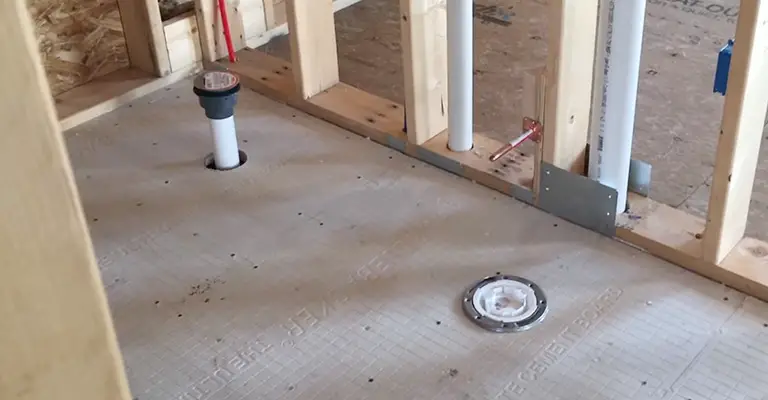The plumbing system in a home is a complex network of pipes and vents designed to efficiently manage wastewater and provide fresh water to various fixtures.
One common question that arises during plumbing installations or renovations is whether a toilet, shower, and sink can share a single vent.
Understanding how plumbing vents work and the potential implications of sharing them among multiple fixtures is essential for ensuring the proper functioning of your plumbing system.
Typically, both bath groups will share a 3-inch drain, and most codes require a vent half as large as the horizontal drain. That’s why the answer is yes.
Plumbing systems can have vents that serve both toilets and sinks. The vent stack or venting system of multiple fixtures in a bathroom is quite common.
Can Two Fixtures Share A Vent?
Have you ever wondered if your sink, toilet, or shower could share a vent with each other? Here’s the place for you. We have researched the topic extensively to provide you with the latest information on this topic.
Having a shared vent between the sink, toilet, and shower is possible and practical. There is, however, a requirement before they can share a vent:
- An efficient drainage system
- Specifications for parts or fixtures with vents
- Venting system
- Amount of distance between units
Here is an article explaining what you need to know about sharing your bathroom sink, toilet, and shower (or bathtub) vent.
Continue reading for more information about plumbing vents, vent pipes, and which parts you should buy for your bathroom vents.
Requirements For A Bathroom Vent Process
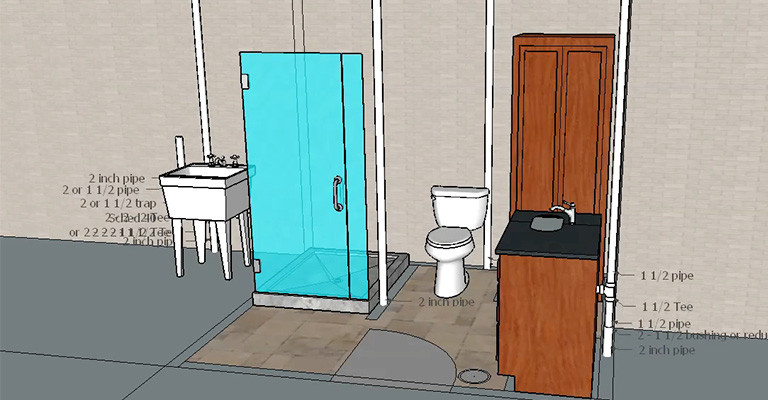
It is essential to follow certain requirements if you want to share a vent in your bathroom fixtures. You may need a drain cleaning professional to prevent clogs in an otherwise unclean drain.
Effective Drainage System
A drainage system in your house allows any excess water to drain out of your house and prevents water damage. In addition to following your local building codes, proper drainage must remain health safe.
It is essential to have an effective drainage system for two reasons:
- An air gap must be present in the draining system. By doing so, slow drains and vacuum-like effects are prevented.
- There must be an outlet for sewer gases outdoors in the drainage system. Sewer or septic gases can flow into the building drain pipes.
There must be a plumbing vent system that routes these gases outside, above the roof of the building. Houses with these vents will not be contaminated with foul or dangerous odors.
Vent Specifications on Parts or Fixtures
Vent sharing requires specific plumbing pipe sizes. Listed below are the best practices:
- Toilet drains should be at least 3 inches wide
- You should have a 1.5-inch sink drain
- Sinks and toilets should have 2″ drains and vents
- An inch and a half should be left on the vent going up
- There is a Y rather than a T connecting the two-inch sewer drain to the three-inch toilet drain
Both the bathroom toilet and sink have wet-vented pipes and connect to the vertical leg of the toilet drain.
A pipe runs off the drain to connect the shower to the wet vent. Showers are not required to have an additional vent if they are less than 5 feet from the vent.
By using this method, you will save time, effort, and money.
Also, you will need:
- PVC pipe and fittings
- PVC primer and cement
- Pipe strap
- Fitting to join to the existing drainpipe
- Basic tools
Venting System
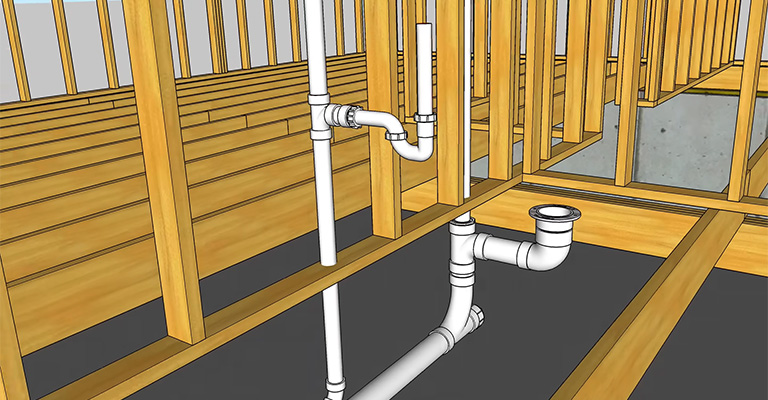
Bathroom vents prevent wastewater and sewage from being pumped into your home’s water supply.
The wet venting method is an excellent solution for toilets and sinks. In addition to serving as a vent for the bathroom, the drain for the sink also serves as a vent for the sink.
In a wet vent system, the air is vented from one unit to the other while water drains from one fixture. The system that transports air does not carry out water.
When a dry vent is used, air is usually vented from one unit at a time rather than from two fixtures at once.
Distances between Units
You must have easy access to the toilet, sink, and shower. It is impossible to share a vent without this.
What is the Drain-Waste-Vent (DWV) System?
As an extension of your home’s sanitary system, the DWV system is also called the DWV system, including all the plumbing parts except for those used for water supply.
The drainage system includes drainpipes, vents, and drains. Usually, sewer gases cannot enter your home through your drain traps (shaped like U or P), which prevent wastewater from entering the house.
A drain pipe transports wastewater to the main sewer line. Underground sewer lines carry sewage to the district sewer system or septic tank if they have been installed.
What is an AAV (Air Admittance Valve)?
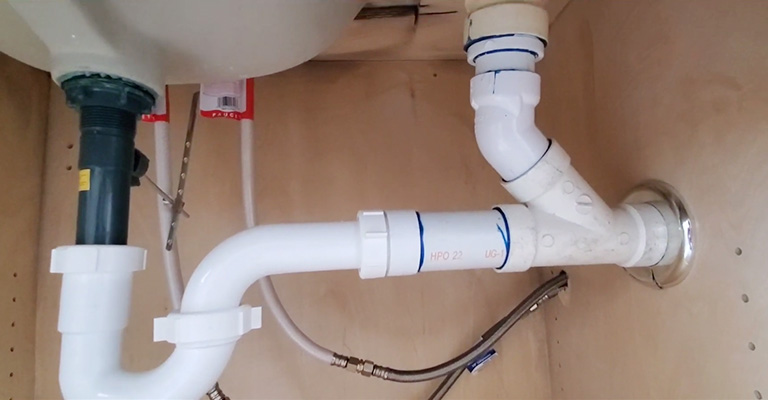
The plumbing system has AAVs that allow air to enter the drainage system. As a result of water flow, negative pressure develops within the pipes.
A vent closes when gravity closes the valve, preventing sewer gases from entering the house as the pressure in the piping system equalizes (no water flow).
What Is The Difference Between A Drain Pipe And A Vent Pipe?
The drainage and vent pipes assist with efficiently removing water and waste. If you have a septic tank, drainage pipes will take wastewater from your house to the city sewer.
A vent pipe provides fresh air to a plumbing fixture in your home. Every time someone flushes the toilet or drains the sink, it helps the plumbing system move water using drainage pipes.
What Are The Purposes Of Plumbing Vents?
It is the primary purpose of a plumbing vent to protect trap seals. A trap seal aims to seal a pipe and aid in its movement inside the house by using water to seal the pipe.
Under your sink, you’ll find a U-trap, which is the most frequently used trap. P-traps are the next most common type.
These fixtures use a bent pipe to maintain a seal between the fixture’s drain and the pipe system. The seal creates a siphoning effect once water flows into the drain, keeping gasses inside the house.
A few other purposes are as follows:
- Drain flow is improved — plumbing vents allow air to enter the plumbing and force water out of the drainage pipes. Plumbing vents that are clogged may lead to problems with drain flow.
- Ensure the sewer gas is transported outside—plumbing vents prevent poisonous and smelly odours from entering the house.
- It helps transport waste material outside by venting the sewer.
What Does A Plumbing Vent System Consist Of?
It contains pipes that provide airflow to or from drainage systems. Additionally, it provides air circulation within such a system to prevent siphonage and backpressure from damaging trap seals.
What Is The Connection Of A Trap Seal With Plumbing Vents?
The trap seal produces two positive effects in conjunction with plumbing vents:
- In addition, it prevents bad smells from entering the house from the pipes.
- It prevents clogging and allows water to drain faster and move waste material trapped in the water.
What Are DFUs (Drain Fixture Units)?
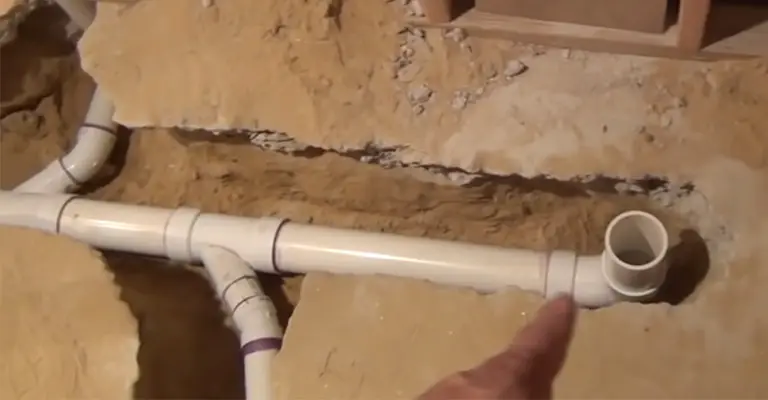
FUs or DFUs are measurement units that are based on the daily discharge rate, the timing of the operation, and the frequency of use of a particular fixture to determine its hydraulic load on the sanitary system.
Calculation of drainage flows from fixtures and sewer capacity requirements are performed by DFUs.
What Are The Parts You Need To Install A Bathroom Vent Process?
The following parts are necessary for bathroom venting:
Air Admittance Valve Trap
By installing this assembly, sewer gas and odors are prevented from entering the house. In kitchens and bathrooms, it serves as a vent for sinks.
Tubular Trap Assembly
This fixture is designed to be used on 1.5-inch vents and can also be installed on stack vents in pump waste and sewer ejector systems. The vent pipe terminates with twice as much sealing power using this system.
Larger Tubular Trap Assembly
There is also a model comparable to the 1.5-inch Tubular vent valves but with a larger vent opening.
PVC Air Admittance Valve
Designed for single fixtures and groups alike, this valve with PVC adapter houses 160 DFUs (drain fixture units) on a branch and 24 DFUs on a stack.
It prevents the loss of water in seals in traps with ventilation. With gravity, the enclosure seals automatically, avoiding the circulation of smelly odors from the bathroom or the drain.
Final Words
In plumbing systems, it’s generally advisable for fixtures like toilets, showers, and sinks to have their own individual vents whenever possible.
Venting is crucial to prevent siphoning of water from traps, maintain proper drainage, and eliminate sewer gases from entering the living space.
Each fixture should ideally have its vent that connects to the main vent stack or vent system for the building.
However, there are situations where it might be acceptable to share a vent between fixtures, depending on local building codes and the specific circumstances of the plumbing layout.
This is typically more common in older homes with non-standard plumbing configurations.
If you’re considering sharing a vent, it’s essential to consult your local building codes and regulations to ensure compliance.
In many cases, consulting with a licensed plumber may be necessary to evaluate your plumbing system and determine the best course of action to maintain proper venting and drainage.
Proper venting is crucial to prevent plumbing problems and ensure your fixtures’ safe and efficient operation.

